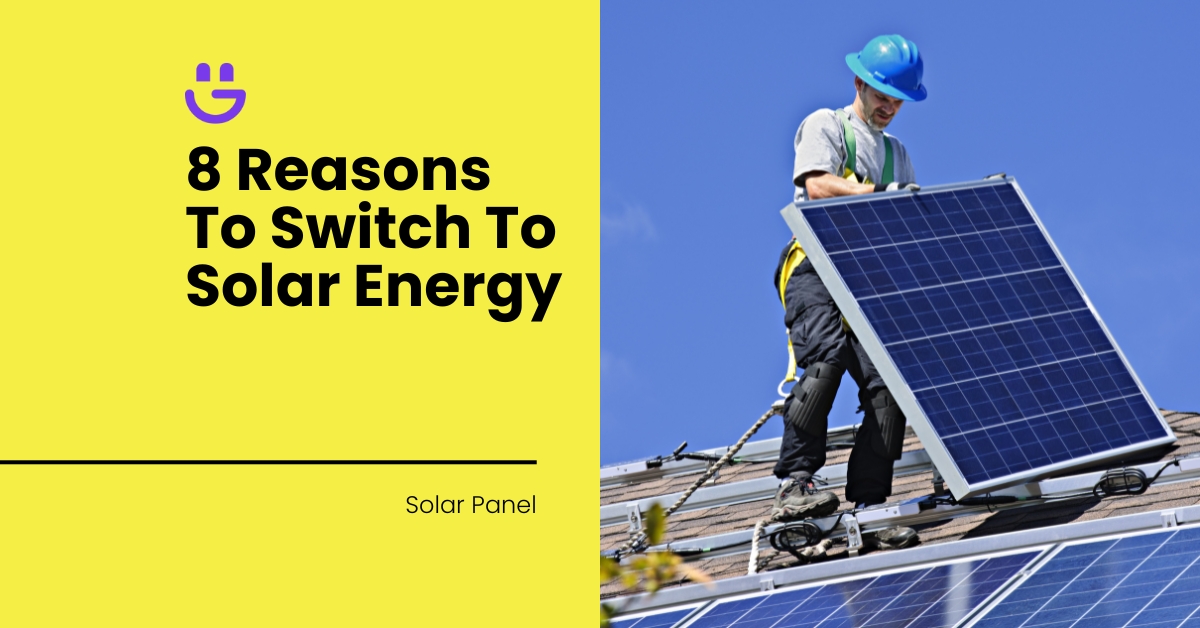Last Updated on November 14, 2025
Yes, solar panels work in winter and all year round. Solar panels work best in direct sunlight but they can also generate energy from softer, diffuse light on a cloudy day.
As renewable energy becomes more popular, many property owners are wondering if solar panels are a worthwhile investment for their home or business. This is especially true during the darker winter in the UK, where the sun shines less and it rains more frequently.
The good news is that solar panels rely on the sun’s light rather than its heat. Even in winter, there is usually enough light to activate solar cells. Let’s explore how solar functions in winter, how effective it is, and how to optimise your solar panel output in the cold season.
Contents
How Do Solar Panels Generate Electricity In Winter?
Solar panels work when their solar photovoltaic cells capture photons from sunlight. Photons are pockets of energy that interact with electrons within the solar cell. This interaction energises the electrons into motion to create an electric current. The currents from each cell are combined into a flow of DC electricity which inverters convert into AC electricity for your home and business.
Solar panels function on cloudy days because they can use diffuse light as well as direct light. Diffuse light is the indirect sunlight that filters through clouds. It’s weaker than direct radiance but solar cells can still capture some photons to generate electricity.
While the bright sunlight of a clear day delivers more power, the ‘weaker’ light from a grey sky is still a valuable source of energy.
How Effective Are Solar Panels In Winter Months?
Shorter winter days bring fewer hours of light. In addition, the sun’s angle is lower and the light is less bright. All of these factors depress solar production. An icy, snowy spell can see your solar panels generate near-zero electricity.
How much energy do solar panels generate in winter?
Average daily UK sun hours, as recorded by Statisa, show that June 2023 had 8.2 hours and December only 0.9 hours. Some will deduce from this that solar panels are 1/8th as effective in winter compared to high summer. By some estimates, solar energy generated in winter is about 80% less than in summer.
Energy Saving Trust figures suggest a south-facing 3 kW system, producing 300 kWh during June or July, will produce around 75 kWh in December or January – a quarter of the summer output. Many households and businesses achieve around this level, but some achieve much less.
Solar power generation usually picks up by mid-March or April. The rewards of solar energy production are reaped during the seven or eight months between March and October. Property owners with an efficient solar system can usually reduce their reliance on the grid to under 10% during this period.
The option to sell your excess electricity back to the grid through the Smart Export Guarantee (SEG) is another reward during this time.
How Can You Maximise Solar Panel Efficiency in Winter?
Here are the 5 top tips to ensure your solar panels continue to work effectively in winter.
1. Clear snow from your panels
A light dusting of snow may not be an issue but a heavier buildup prevents light from reaching the solar cells. Snow usually slides naturally off the sleek surface of tilted panels, but heavy snow may need a nudge with a soft brush. However, this should be approached carefully, as your roof is slippery in cold, wet conditions.
Also, be aware that when you dislodge large chunks of snow, it can drop from the roof like a mini-avalanche.
2. Adjust the tilt angle
The sun is lower and flatter in winter. So, tilting panels upwards gets more sunlight to them. This is not possible if you have fixed-mounted panels but if you have a ground-mounted system or a setup that allows for seasonal adjustment, steepening the angle accesses more energy. It also helps snow slide off easier.
It’s recommended that panels should be at an angle no less than your location’s latitude. Newcastle, for example, has a latitude of approximately 55° North; Portsmouth is 51° North and London is 51.5° North.
3. Cleaning and maintenance
A buildup of debris and bird droppings will reduce efficiency over time. Keep the panel surfaces clean, especially in winter, to maximise light capture. The rain may partially rinse off dirt but it’s no substitute for a proper clean with specialised equipment.
4. Smart battery usage
Solar battery storage is a great addition to a solar system. If you have a battery, use it smartly to store energy and get the most from your system. It’s a good idea to charge your battery overnight, using off-peak tariffs. This ensures you have cheap electricity in the early part of the day when the sun is weak and grid energy is expensive.
Aim to replenish your battery from solar throughout the day to provide the electricity you need for the evening.
Note: A battery’s performance may suffer if it gets too cold, so you want to locate it in a decently insulated spot, out of extreme weather.
5. Monitor your system
Track all aspects of your system closely. Apps and tools allow you to monitor your energy production, usage (grid and solar), and system efficiency. It can also show how your battery and individual panels are performing.
A drop in production or efficiency will alert you to potential problems like dirt buildup, faulty connections, a damaged panel, or battery issues.
What Are The Best Types of Solar Panels For Winter?
Not all solar panels are made equal. Choosing the right system for your property may involve some trade-offs between cost, efficiency, and design.
All else being equal, monocrystalline panels offer slightly better performance in winter given their superior energy efficiency and better low-light capabilities.
It’s important to research and choose quality solar panels from a trusted brand. The upfront outlay will be steeper but it will pay dividends in the long run. The difference in performance between a good panel and an inferior one can exceed 25%.
Here’s a look at the leading types of solar PV panels for winter:
Monocrystalline
Monocrystalline panels aremade from single-crystal silicon. Usually sleek-black in appearance, they are the premier and most expensive class of panels.
Monocrystalline units are the most energy-efficient. Top-tier products have an efficiency of 23% to 24%, meaning they convert 24% of harvested sunlight into electricity.
These solar panels perform well in low-light conditions, too.
Polycrystalline
Polycrystalline panels are made from multiple silicon crystals, making them less expensive to manufacture and therefore cheaper.
Often blueish in appearance, they are good all-around performers but not as efficient as monocrystallines.
The best polycrystalline panels deliver energy efficiency between 18% and 20%.
Thin-film
Thin-film panels are made from layers of different photovoltaic materials. They are flexible and lightweight and often used in large-scale installations where aesthetics are less important. Thin-film panels are the most affordable and least efficient option.
How Can Technology Improve Solar Panel Efficiency in Winter?
Solar technology is continuously advancing and improved solar panel efficiency is a key focus. The following are more recent developments that are improving efficiency in low-light winter conditions.
Bifacial solar panels
Bifacial solar panels are designed to capture sunlight on both sides. They catch light from the front (top) and reflected light from the back (bottom) to increase overall efficiency. These advanced panels are particularly effective on more reflective white or light-coloured rooftops. They also work well in snowy regions.
Microinverters
Microinverters are small inverters attached to each solar panel in the system. They convert the direct current (DC) generated by the panel into alternating current (AC). Microinverters offer improved system efficiency and better performance in shaded conditions.
By allowing each panel to operate independently, they ensure one failing panel doesn’t drag on the whole system.
Power optimisers
Power optimisers are converters connected to individual solar panels that enhance production by monitoring and optimising each panel’s performance independently. Besides individual panel monitoring, they have features to improve safety and ensure compatibility with your battery storage. Power optimisers are worth considering to boost winter output.
FAQs
Do solar panels stop working in cold temperatures?
Solar panels are designed to work at very low temperatures. Most brands of high-quality solar panels should be functional at temperatures as low as 40°C.
Does cold weather affect the efficiency of solar panels?
Cold weather can actually improve the efficiency of solar panels. Solar panels typically operate more efficiently at lower temperatures. Chilly, sunny days are ideal for solar panel performance.
Do solar panels work in the rain?
Yes, solar panels work in the rain. While their efficiency is reduced compared to sunny days, they can still generate electricity from diffuse light.
Can I heat my house with solar panels?
Solar panels can contribute to your home’s heating needs. However, since heating demands peak in winter when solar production is lower, solar panels may only cover part of your winter heating needs, necessitating some reliance on the grid. For those considering underfloor heating, understanding the specific number of solar panels required to support this system can be crucial. Our guide on how many solar panels you need for underfloor heating provides detailed insights into achieving optimal efficiency and comfort with solar power.
Is it worth investing in solar panels in the north of the UK?
It is worth considering an investment in solar panels even in the north of England and Scotland. While solar may produce less energy during the winter, it promises savings on energy bills and helps reduce your carbon footprint year-round. This is especially true if you have a south-facing roof or property.
Our Verdict
Solar panels work in winter, even if they produce considerably less electricity than in summer. Winter’s shorter daylight hours and lower sun angle reduce solar output; however, advancements in technology and good monitoring ensure there’s no need for a Christmas shutdown.
To get the most from your system in winter, clear snow from your panels, adjust their tilt angle if possible, and use smart battery storage. Choosing high-quality solar panels and incorporating technology like microinverters can further enhance winter solar performance.
Despite the winter challenges, solar panels are a valuable investment that delivers great energy savings for most of the year, and valued environmental benefits all year round.
A solar panel system is a great way to future-proof your property and lower your carbon footprint using the sun’s renewable energy. Start enjoying lower energy bills by contacting Eco Happy for a free, no-obligation solar installation quote today.





Tom Allen
Solar Expert